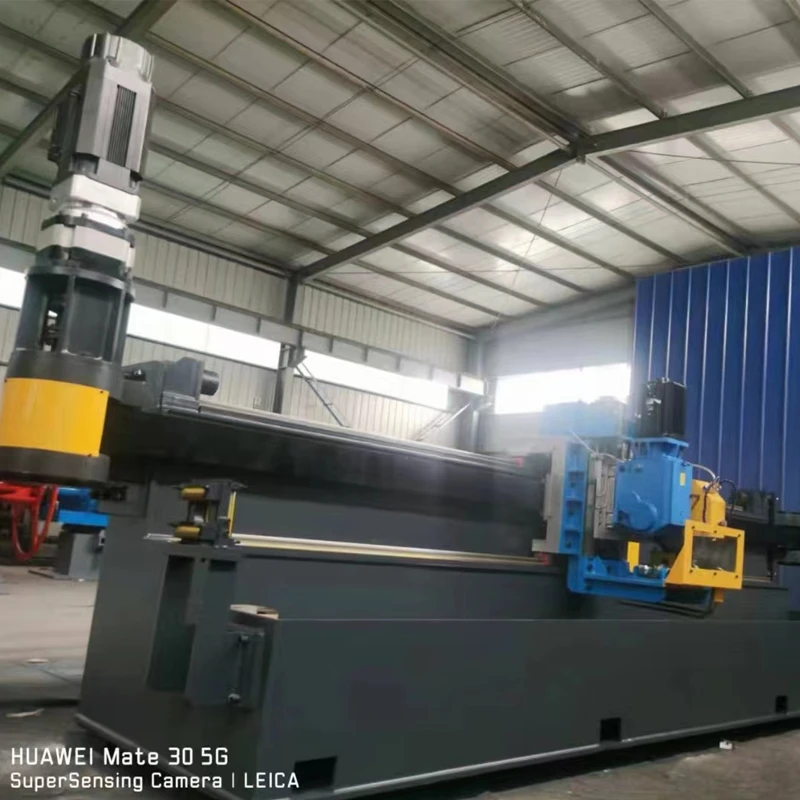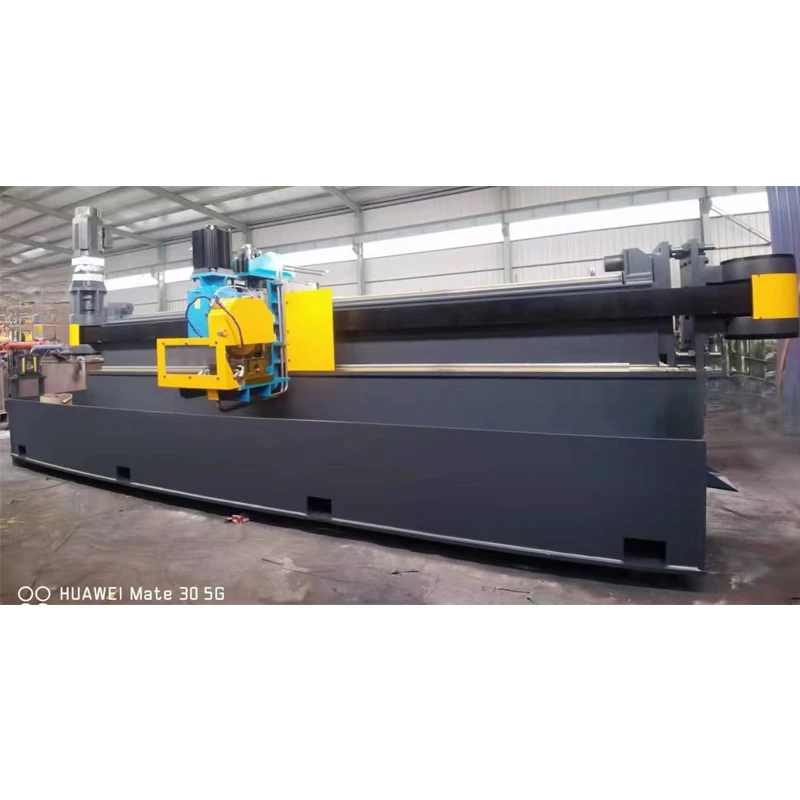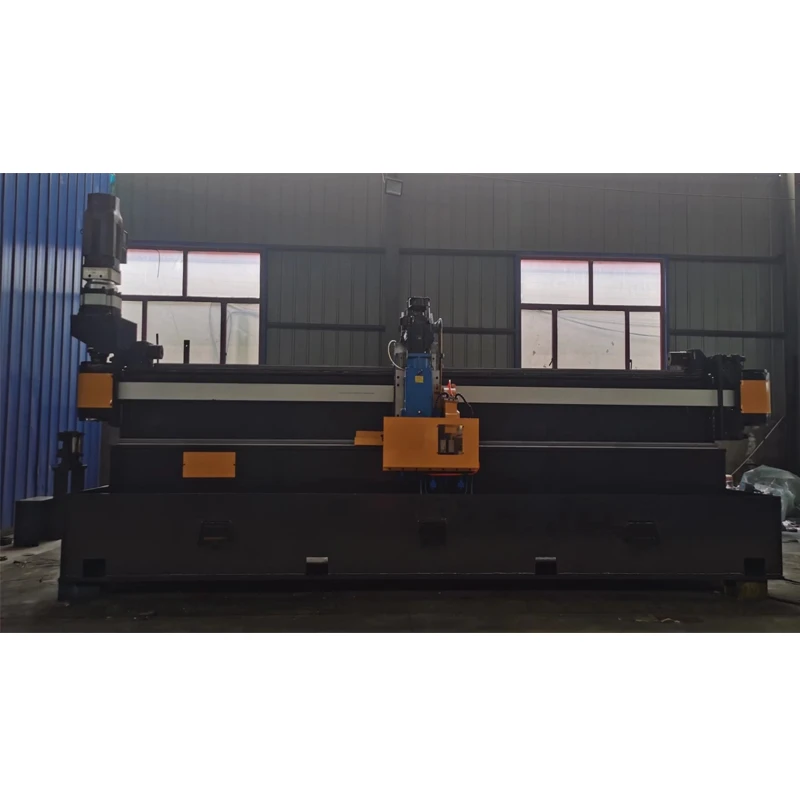Precision Flying Saw & Shear Machines | High-Speed Cutting
BzZhou Xinghua Machinery Equipment Manufacturing Co.,LTD.
- Website: https://www.xhequipment.com
- Email: 2656245970@qq.com
- Phone: +8600316-7211896
- Address: Liuzhuang Village industrial zone, Chaheji Township, Bazhou city, Hebei province
- Specialty: Design and manufacturing of high-precision flying shear solutions since 2005
The industrial manufacturing landscape has been transformed by precision cutting technologies like flying saw systems, which enable continuous processing of materials with unprecedented speed and accuracy. These sophisticated machines have become indispensable in metalworking industries worldwide.

Industrial Grade Flying Saw Operation

Fully Automated Cutting System

Precision Cutting Mechanism Detail
Flying Saw Industry Evolution & Key Milestones
Since their emergence in the 1960s, flying saw systems have undergone remarkable technological evolution. Early hydraulic systems have been replaced with CNC-controlled precision mechanisms capable of cutting at line speeds exceeding 120 m/min. The transition from mechanical to computer-controlled operations in the 1990s marked a significant milestone in flying shear technology development.
Current Industry Statistics
According to recent market analysis, adoption of advanced flying shear machine solutions has increased operational efficiency in pipe production facilities by 30-50% while reducing material waste by 10-15% compared to conventional cutting methods.
Product Spotlight: Cold Cutting Flying Saw
Premium Cutting Technology
BzZhou Xinghua Machinery presents our flagship Cold Cutting Flying Saw, engineered for superior performance in continuous tube production lines. Our advanced CNC system achieves unparalleled cutting precision while maintaining production line momentum.
Core Specifications:
- Cutting Material Compatibility: Q195/Q235/Q355 steel pipes
- Round Pipe Diameter Range: 19.5-32mm
- Material Thickness Capacity: 2.0-2.75mm
- Cutting Speed: Synchronous with production line velocity
- Precision Tolerance: ±0.2mm longitudinal, ±0.5mm angular
- Drive System: AC servo motor with digital encoder control
Technical Parameters Comparison
| Parameter | Standard Flying Saw | CNC Cold Cutting Flying Saw | Advanced Flying Shear | Xinghua Machinery Model |
|---|---|---|---|---|
| Cutting Precision (mm) | ±1.0 | ±0.5 | ±0.3 | ±0.2 |
| Maximum Speed (m/min) | 60 | 90 | 110 | 120 |
| Pipe Diameter Range (mm) | 15-25 | 15-30 | 12-38 | 19.5-32 |
| Material Thickness (mm) | 1.0-2.0 | 1.5-2.5 | 1.8-3.0 | 2.0-2.75 |
| Positioning Accuracy | Mechanical | Servo Control | Digital Feedback | Full CNC Synchronization |
| Tool Change Time (s) | 120+ | 90 | 60 | 45 |
Technical Performance Analysis
Technical Design Highlights
Synchronization Mechanism
Advanced flying shear design utilizes digital encoders for position tracking and AC servo motors synchronized with production line velocity. This ensures precise contact timing while maintaining cutting speed alignment within 0.1% variance.
Cold Cutting Advantages
Unlike thermal cutting methods, flying saw cold cutting preserves material integrity, eliminating heat-affected zones (HAZ) and structural modifications that compromise joint integrity in final products.
Modular Tooling System
Our patented quick-change blade system reduces tooling downtime by 70% compared to conventional designs. Tool-free adjustments accommodate material variations without production interruption.
Industrial Applications
Flying saw systems have become essential equipment across multiple industries due to their precision cutting capabilities at production line speeds:
- Pipe Manufacturing: Continuous cutting of welded pipes during formation at speeds exceeding 100m/min
- Structural Sections: Precision cutting of I-beams, angle iron, and channel profiles
- Electrical Conduit Production: High-volume cutting with zero deformation in galvanized conduits
- Automotive Components: Cutting of chassis components and exhaust systems
- Appliance Manufacturing: Precision sizing of tubular components for refrigerators, washing machines, and HVAC systems
Professional FAQ
What materials are optimal for flying shear blades in high-volume operations?
Premium tungsten carbide (WC) grades demonstrate optimal performance for industrial flying saw operations. For high-carbon steels, WC grade K20 provides superior wear resistance. Production environments cutting stainless steel benefit from grades with higher cobalt content (10-15%) for increased shock resistance. Blade geometry must be optimized for specific material yield strengths.
How does modern flying shear design address safety concerns?
Contemporary safety integration incorporates multiple redundancy systems including light curtains at operator access points, hydraulic pressure monitoring systems, emergency stop circuits with Category 4 reliability, and torque-limiting couplings. Advanced safety controllers with SIL-3 certification enable immediate shutdown if synchronization parameters exceed tolerance thresholds.
What dimensional tolerances can be maintained with a precision flying saw machine?
Industry-leading flying saw systems like Xinghua's CNC models achieve longitudinal cutting tolerances of ±0.2mm and angular alignment within 0.5 degrees relative to tube axis. Maintaining these specifications requires integration of linear encoders with resolution below 5 microns and servo systems with response times under 20ms.
What lubrication systems extend blade life in continuous flying shear operations?
MQL (Minimum Quantity Lubrication) systems utilizing biodegradable ester-based lubricants provide optimal performance. Precision applicators positioned within 50mm of the cutting interface reduce lubricant consumption by 80% compared to flood systems while extending blade life by 40-60%. Automatic nozzle cleaning prevents buildup that compromises application precision.
How do you determine optimal clamping force in a flying saw system?
Clamping pressure must exceed cutting forces by a safety factor of 3.5-4.0 to prevent material displacement. For Q235 steel with 2.75mm wall thickness, calculations demonstrate required clamping forces of 22-25kN for 32mm diameter pipe. Pneumatic systems with proportional valves and pressure feedback provide real-time adjustment based on material properties.
What are the vibration mitigation strategies in high-speed flying shear machine design?
Advanced harmonic analysis identifies critical resonance frequencies. Countermeasures include tuned mass dampers targeting dominant frequencies, symmetrical gantry construction to reduce torsional vibration, and active vibration cancellation using piezoelectric actuators. Surface grinding of mounting interfaces ensures better than 3μm flatness to eliminate vibration-inducing uneven surfaces.
How frequently should calibration checks be performed on a precision flying saw?
Daily dimensional verification should be performed using certified ring gauges. Complete calibration including axis alignment, encoder accuracy, and servo synchronization requires certified equipment every 600 operational hours or quarterly, whichever comes first. Environmental factors like temperature fluctuations exceeding 5°C necessitate interim verification.
Industry References
- [1] Modern Manufacturing Review: "Advancements in Continuous Cutting Technology for Tube Production Lines" - https://www.manufacturingreview.org/article/advancements-in-continuous-cutting-technology
- [2] Journal of Industrial Engineering: "Comparative Analysis of Mechanical vs CNC Flying Shear Performance Metrics" - https://www.jie-publications.com/mechanical-vs-cnc-flying-shear
- [3] International Metalworking Technology Bulletin: "Cutting Edge Developments in Sheet Metal Processing Equipment" - https://www.imtb.org/developments-sheet-metal-processing
- [4] American Society of Mechanical Engineers: "ASME STS-1: Safety Standards for Industrial Cutting Systems" - https://www.asme.org/sts1-cutting-safety
-
Welded Pipe Production Line - BzZhou Xinghua Machinery Equipment Manufacturing Co., LTD.|High-Frequency Straight Seam Welding&Precision EngineeringNewsJul.22,2025
-
Welded Pipe Production Line - BzZhou Xinghua Machinery|High-Efficiency, Precision EngineeringNewsJul.21,2025
-
Welded Pipe Production Line-BzZhou Xinghua Machinery Equipment Manufacturing Co.,LTD.|High Precision, Efficient ProductionNewsJul.21,2025
-
Welded Pipe Production Line-BzZhou Xinghua Machinery Equipment Manufacturing Co.,LTD.|High Precision, Efficient ProductionNewsJul.21,2025
-
Welded Pipe Production Line-BzZhou Xinghua Machinery Equipment Manufacturing Co.,LTD.|High Precision, Efficient ProductionNewsJul.21,2025


